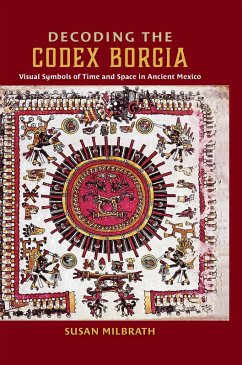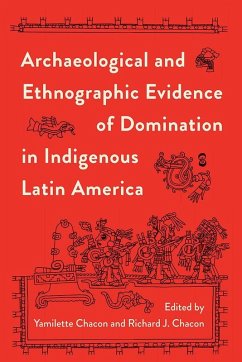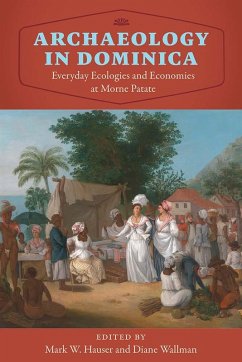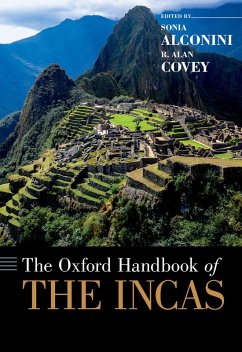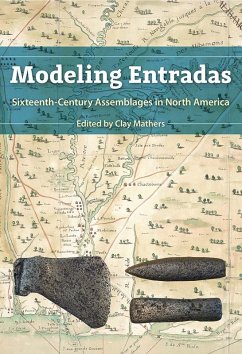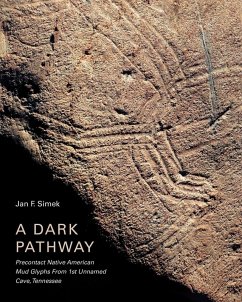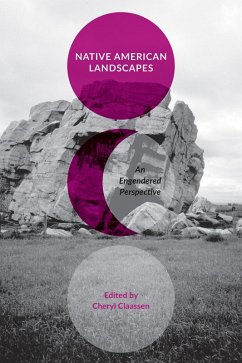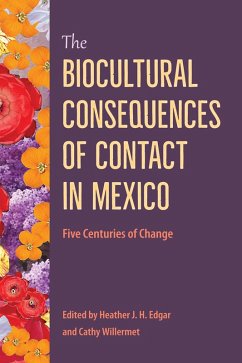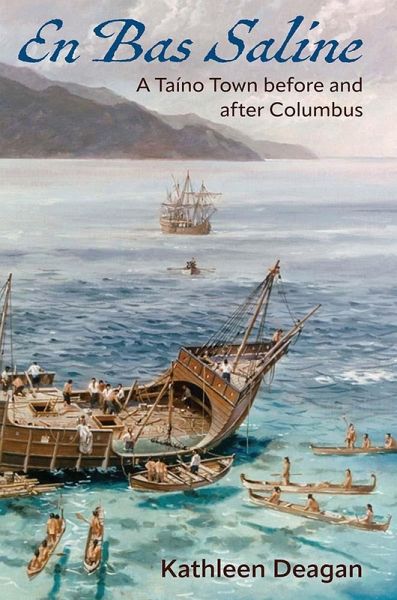
En Bas Saline (eBook, PDF)
A Taíno Town before and after Columbus
Versandkostenfrei!
Sofort per Download lieferbar
134,95 €
inkl. MwSt.
Weitere Ausgaben:

PAYBACK Punkte
67 °P sammeln!
Life in an Indigenous town during an
understudied era of Haitian history
This
book details the Indigenous Taíno occupation at En Bas Saline in Hispaniola between
AD 1250 and 1520, showing how the community coped with the dramatic changes
imposed by Spanish contact. En Bas Saline is the largest late precontact Taíno
town recorded in what is now Haiti; the only one that has been extensively
excavated and analyzed; and one of few with archaeologically documented
occupation both before and after the arrival of Columbus in 1492. It is thought
to ...
Life in an Indigenous town during an
understudied era of Haitian history
This book details the Indigenous Taíno occupation at En Bas Saline in Hispaniola between AD 1250 and 1520, showing how the community coped with the dramatic changes imposed by Spanish contact. En Bas Saline is the largest late precontact Taíno town recorded in what is now Haiti; the only one that has been extensively excavated and analyzed; and one of few with archaeologically documented occupation both before and after the arrival of Columbus in 1492. It is thought to be the site of La Navidad, Columbus's first settlement, where the cacique Guacanagarí offered refuge and shelter after the sinking of the Santa María.
Kathleen Deagan provides an intrasite and spatial analysis of En Bas Saline by focusing on households, foodways, ceramics, and crafts and offers insights into social organization and chiefly power in this political center through domestic and ornamental material culture. Postcontact changes are seen in patterns of gendered behavior, as well as in the power base of the caciques, challenging the traditional assumption that Taíno society was devastatingly disrupted almost immediately after contact. En Bas Saline is the only archaeological account of the consequences of contact from the perspective of the Taíno peoples' lived experience.
A volume in the Florida Museum of Natural History: Ripley P. Bullen Series
This book details the Indigenous Taíno occupation at En Bas Saline in Hispaniola between AD 1250 and 1520, showing how the community coped with the dramatic changes imposed by Spanish contact. En Bas Saline is the largest late precontact Taíno town recorded in what is now Haiti; the only one that has been extensively excavated and analyzed; and one of few with archaeologically documented occupation both before and after the arrival of Columbus in 1492. It is thought to be the site of La Navidad, Columbus's first settlement, where the cacique Guacanagarí offered refuge and shelter after the sinking of the Santa María.
Kathleen Deagan provides an intrasite and spatial analysis of En Bas Saline by focusing on households, foodways, ceramics, and crafts and offers insights into social organization and chiefly power in this political center through domestic and ornamental material culture. Postcontact changes are seen in patterns of gendered behavior, as well as in the power base of the caciques, challenging the traditional assumption that Taíno society was devastatingly disrupted almost immediately after contact. En Bas Saline is the only archaeological account of the consequences of contact from the perspective of the Taíno peoples' lived experience.
A volume in the Florida Museum of Natural History: Ripley P. Bullen Series
Dieser Download kann aus rechtlichen Gründen nur mit Rechnungsadresse in A, D ausgeliefert werden.




